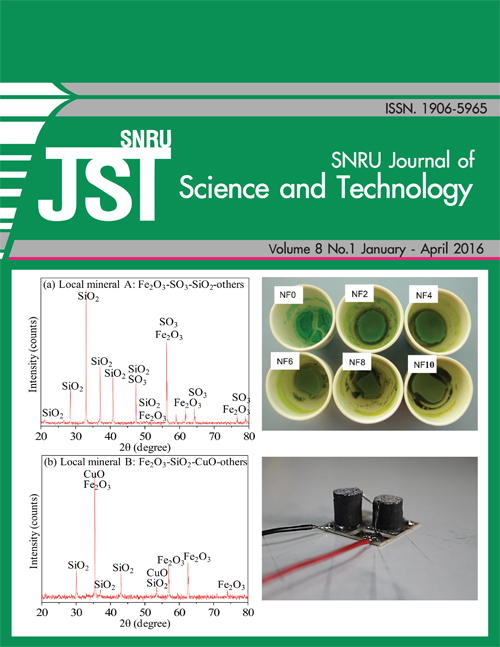Uni-leg and -shape thermoelectric cells
Keywords:
Uni-leg, Thermoelectric generator, -shape, feasibility, p-n junctionAbstract
The thermoelectric generator (TEG) is a promising device for changing wasted heat energy into electricity, however the device is currently inefficient at generating power in this way. Exploration and development of thedevice’s efficiency is necessary for cell fabrication. In this work, comparisons are made between the power generation of uni-leg p-Ca3Co4O9, uni-leg n-Ca0.97Bi0.03MnO3 and p-n junction (-shape) of p-Ca3Co4O9,
n-Ca 0.97Bi0.03MnO3. The dimensions of the thermoelectric material were a cross-sectioned area of 78.5 mm2 with a height of 10 mm. The size of the alumina substrate was 25×25 mm2. Thermoelectric cell fabrication used copper
wire, series connected thermoelectric materials for the uni-legs cell and thin copper plate for the -shape thermoelectric cell. The voltage, current, power output and conversion efficiencies were measured by the steady
stat method. It was found that, in the 3 samples, uni-leg n-Ca0.97Bi0.03MnO3 had the highest maximum voltage of 76.8 mV, with electrical current around 70 mA, electrical power of 5 mW and a conversion efficiency of 0.187% at
a temperature difference of 200 K, which makes this fabricated thermoelectric device feasible.
Downloads
Published
2016-04-21
How to Cite
Paengson, S. (2016). Uni-leg and -shape thermoelectric cells. Creative Science, 8(1), 199–203. retrieved from https://ph01.tci-thaijo.org/index.php/snru_journal/article/view/55345
Issue
Section
Research Article









